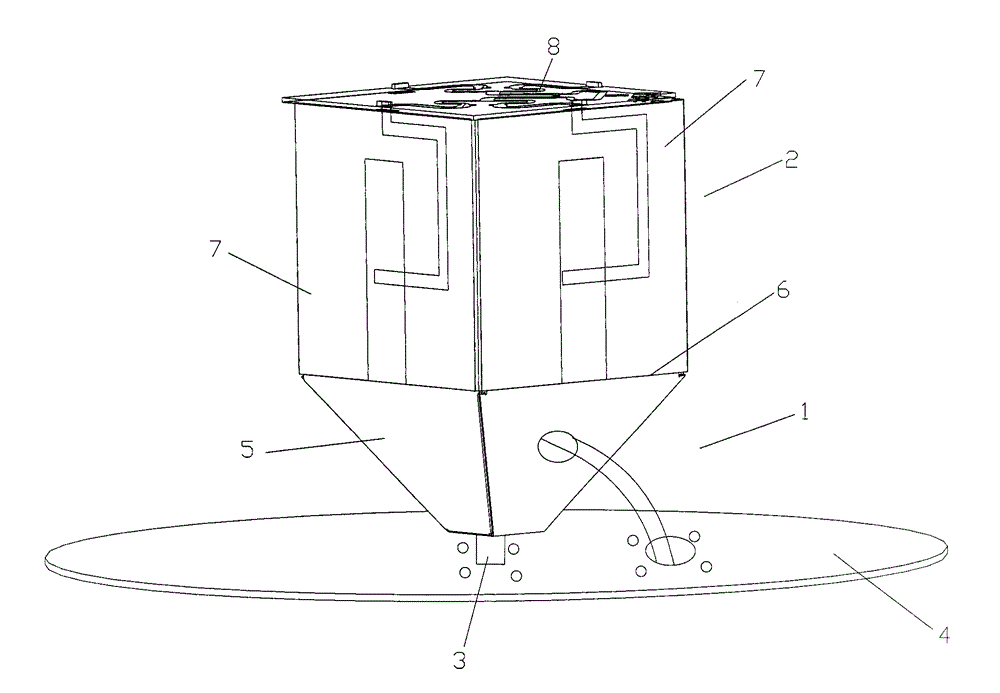Indoor omnidirectional antenna
An omnidirectional antenna and antenna technology, which is applied in antenna coupling, antenna unit combinations with different polarization directions, etc., can solve the problem that omnidirectional antennas cannot meet dual-polarization requirements.
- Summary
- Abstract
- Description
- Claims
- Application Information
AI Technical Summary
Problems solved by technology
Method used
Image
Examples
Embodiment Construction
[0009] In order to make the object, technical solution and advantages of the present invention clearer, the present invention will be further described in detail below in conjunction with the accompanying drawings and embodiments. It should be understood that the specific embodiments described here are only used to explain the present invention, not to limit the present invention.
[0010] The difference between the embodiments of the present invention and the prior art is that the indoor omnidirectional antenna includes a vertically polarized antenna and a horizontally polarized antenna arranged in the axial direction of the vertically polarized antenna, and the horizontally polarized antenna and the vertically polarized A partition is provided between the antennas to improve the non-correlation (that is, isolation) between the horizontal polarization and the vertical polarization, and to meet the requirements of the LTE system for indoor omni-directional antenna dual polariza...
PUM
 Login to View More
Login to View More Abstract
Description
Claims
Application Information
 Login to View More
Login to View More - R&D
- Intellectual Property
- Life Sciences
- Materials
- Tech Scout
- Unparalleled Data Quality
- Higher Quality Content
- 60% Fewer Hallucinations
Browse by: Latest US Patents, China's latest patents, Technical Efficacy Thesaurus, Application Domain, Technology Topic, Popular Technical Reports.
© 2025 PatSnap. All rights reserved.Legal|Privacy policy|Modern Slavery Act Transparency Statement|Sitemap|About US| Contact US: help@patsnap.com



